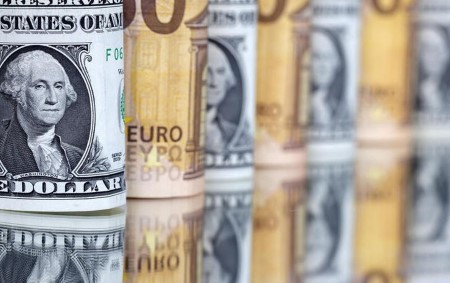




Policy Rate Updates: Double cut finale
 DOWNLOAD
DOWNLOAD

Monthly Economic Update: One for the road
 DOWNLOAD
DOWNLOAD

Inflation Update: Still low, still slow
 DOWNLOAD
DOWNLOAD


EUR/USD sold, havens bought on EU’s gas crisis pre-Fed

July 26 (Reuters) – The euro fell broadly Tuesday as euro zone recession risk ramped up as crucial supplies of natural gas to Europe from Russia fell enough to heighten fears of an energy crisis this winter, forcing EU ministers to agree to emergency gas cut plans.
Dutch natural gas prices gained almost 20% on Tuesday and are up 31.7% this week and 207% from a year ago.
EUR/USD fell 1% as Bund and other euro zone government debt yields slid more than Treasury yields amid risk-aversion flows. Two-year bund-Treasury yield spreads fell 7bps and tested July’s trend lows by -2.7%. That eventually got EUR/USD briefly below the 1.01155 daily tenkan support that had earlier marked Tuesday’s lows.
A grouping of mostly weaker-than-forecast US data, particularly consumer confidence and new home sales nAPN0OD4EK, didn’t stop Treasury yields from recovering intraday drops that were led by tumbling European yields, in part because the Fed remains priced to hike rates Wednesday by 75bps again and at least 50bps in September.
Wednesday’s Fed meeting will not provide economic projections or Fed fund dot plots, so unless the Fed does something other than a 75bp rate hike the focus will be on any change in the statement or Fed Chair Jerome Powell’s remarks that would shift rate hike expectation from September through December, when the market sees Fed funds peaking near 3.4%.
And despite euro zone inflation at 8.6% vs 9.1% in the US, the market isn’t convinced the ECB will hike rates by 50bps again in September and only sees rates rising about 110bps in total by mid-2023.
EUR/USD’s brief break below parity this month might foreshadow further weakness if the Fed doesn’t signal a willingness to slow rate hikes before there is a clear downtrend in inflation, and if Russia continues to use nat gas supplies as economic leverage against the EU.
Sterling was only down 0.1%, with the BoE much further along the rate-hiking path than the ECB, and because the UK is less directly at risk from Russian gas supply reductions.
But sterling needs help from a less hawkish Fed, or a more forceful BoE, to extend its rebound from July’s lows.
USD/JPY was about flat, with both the dollar and yen sought as havens. Early Treasury yield weakness reversed after holding key support and despite US data again proving disappointing, partly in advance of the 5-year auction and the Fed.
That got prices back up by the pivotal 21-day moving average and Tuesday’s high at 136.845 after the New York morning lows at 136.28 on EBS couldn’t break the overnight session low at 136.265.
The pandemic recovery rise in USD/JPY has been slowed by 2-year Treasury-JGB yield spreads remaining well below their June 14, pre-Fed June meeting peak.
The Canadian and Australian dollars were modestly weaker amid Tuesday’s risk aversion, as was the yuan.
Bitcoin and ether wilted further from recent recovery highs.
Ahead of Wednesday’s Fed event risk will be US durable goods orders, wholesale inventories and pending home sales, as well as EIA data that’s partly overshadowed by the Biden administration announcing Tuesday it will sell an additional 20 mln bbls of oil from the SPR.
(Editing by Terence Gabriel; Randolph Donney is a Reuters market analyst. The views expressed are his own.)
This article originally appeared on reuters.com





 By Reuters
By Reuters